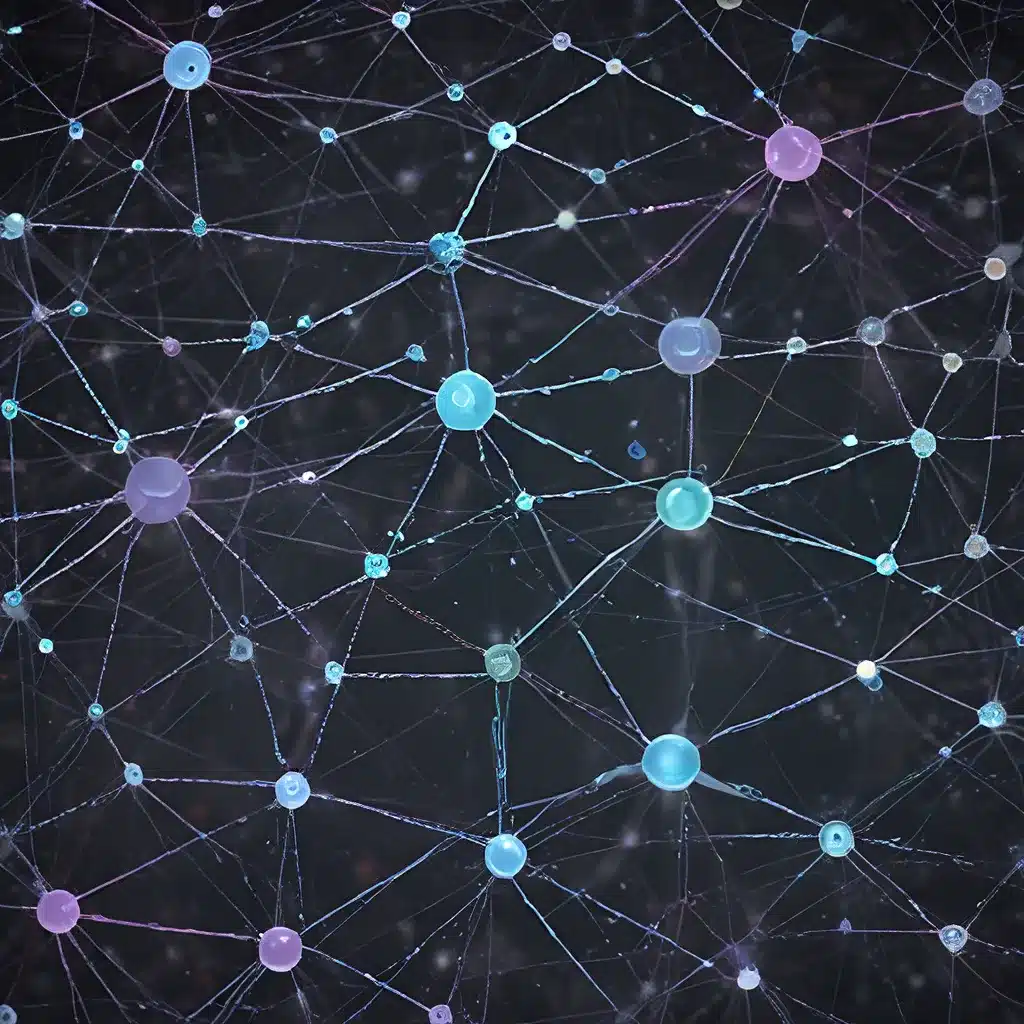
Navigating the Evolving Landscape of Sensor Networks
In the dynamic and ever-changing world of technology, sensor networks have emerged as a key enabler for a wide range of applications, from environmental monitoring to smart cities and industrial automation. As the Internet of Things (IoT) continues to proliferate, the demand for resilient, efficient, and secure sensor network architectures has become increasingly crucial.
One of the primary challenges in the design of sensor networks is ensuring their adaptability and resilience in the face of changing environmental conditions, network topology, and evolving user requirements. Distributed algorithms have emerged as a powerful approach to address these challenges, allowing sensor nodes to collectively respond to dynamic situations and maintain optimal performance.
Distributed Algorithms: The Backbone of Adaptive Sensor Networks
Distributed algorithms are computational procedures that are executed by multiple sensor nodes in a network, with each node contributing to the overall decision-making process. These algorithms are designed to be scalable, fault-tolerant, and capable of adapting to changes in the network’s structure and resource availability.
One of the key advantages of distributed algorithms in sensor networks is their ability to optimize resource utilization, such as energy consumption and network bandwidth. By distributing the computational load across multiple nodes, these algorithms can reduce the strain on individual sensors, prolonging their operational lifetime and enhancing the overall energy efficiency of the network.
Moreover, distributed algorithms can improve the resilience of sensor networks by enabling self-organization and self-healing capabilities. In the event of node failures or network disruptions, these algorithms can dynamically re-route data flows, redistribute tasks, and maintain the overall functionality of the network.
IoT Applications: Unlocking the Potential of Adaptive Sensor Networks
The application of adaptive sensor networks powered by distributed algorithms has the potential to unlock a wealth of opportunities in the IoT landscape. Let’s explore a few key use cases:
Smart Cities
In the context of smart cities, adaptive sensor networks can play a crucial role in improving infrastructure management, environmental monitoring, and public safety. For example, sensor nodes deployed across a city can collaborate to detect and respond to changes in traffic patterns, air quality, or emergency situations, enabling real-time decision-making and resource allocation by city authorities.
Industrial Automation
Adaptive sensor networks are also transforming the industrial landscape, enabling predictive maintenance, process optimization, and supply chain management. By continuously monitoring critical equipment, production lines, and logistics data, these networks can identify and address potential issues before they escalate, ultimately improving operational efficiency and productivity.
Environmental Monitoring
In the realm of environmental monitoring, adaptive sensor networks are revolutionizing the way we observe and respond to natural phenomena. Sensor nodes strategically placed in forests, wetlands, or coastlines can collaborate to detect and track changes in weather patterns, wildlife activity, or ecosystem health, providing valuable insights for conservation efforts and disaster response.
Security Challenges and Countermeasures
As the complexity and connectivity of sensor networks continue to grow, the security of these systems becomes an increasingly critical concern. Distributed algorithms can play a pivotal role in enhancing the security of sensor networks by implementing robust authentication mechanisms, intrusion detection systems, and secure data communication protocols.
Recent research has explored the use of blockchain technology and cryptographic techniques to secure sensor networks, ensuring the integrity and confidentiality of data exchanged between nodes. Additionally, distributed algorithms can enable dynamic access control, resource allocation, and task delegation strategies to mitigate the impact of cyber threats and malicious actors in the IoT ecosystem.
Energy Management: Optimizing the Lifespan of Sensor Networks
One of the critical challenges faced by sensor networks is energy management, as sensor nodes are often battery-powered and operate in remote or inaccessible environments. Distributed algorithms can play a pivotal role in optimizing the energy consumption of sensor networks through techniques such as dynamic duty cycling, load balancing, and energy-aware routing.
Studies have shown that distributed algorithms can extend the lifetime of sensor networks by up to 40% compared to centralized approaches. By intelligently managing energy resources, distributing computational tasks, and adapting to changing network conditions, these algorithms can ensure the long-term sustainability and reliable operation of sensor-based systems.
The Future of Adaptive Sensor Networks
As the technological landscape continues to evolve, the role of adaptive sensor networks powered by distributed algorithms will become increasingly pivotal. Advancements in edge computing, machine learning, and 5G/6G communications are poised to further enhance the capabilities and applications of these sensor networks.
Looking ahead, we can expect to see sensor networks that adapt in real-time to user preferences, environmental changes, and resource constraints, optimizing their performance and ensuring the seamless integration of IoT technologies across a wide range of industries and domains.
By embracing the power of distributed algorithms and continuous adaptation, the sensor network ecosystem is well-positioned to drive the next wave of innovation in the IoT landscape, improving our quality of life, enhancing sustainability, and transforming the way we interact with the digital and physical worlds.
Sensor-Networks.org is at the forefront of this technological revolution, providing cutting-edge research, industry insights, and practical solutions to empower the next generation of sensor network pioneers.